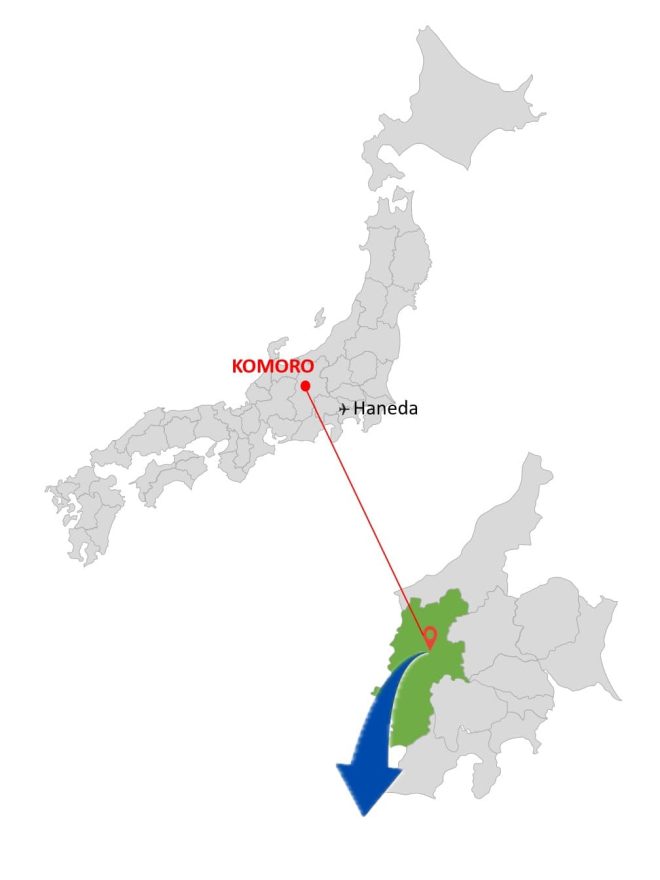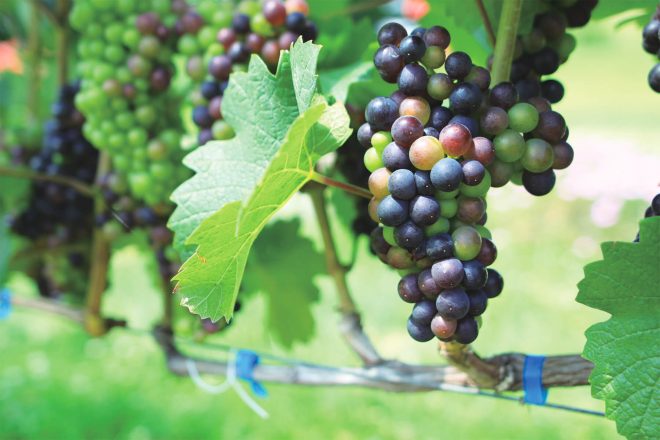Komoro
Komoro
Recommended Spots
Tour Route
Traveling through old and new cities in Shinshu Komoro
Day 1
Hokkoku Kaido Komoro-juku
Thanks to the charming Hokkokukaido streets, numerous temples and shrines, and recently opened restaurants, the number of visitors to the city is increasing.Here's the edited sentence. You can also rent bicycles at the Komoro City Tourist Information Center right next to the train station.
Nunobiki Kannon Shakusonji Temple
This temple belongs to the Tendai sect and is situated on the western shores of Chikuma River from Komoro Station. The Kannon-do Hall, which is painted in red and is built on a cliff, is the place where the famous Nunobiki story took place.
Kurumi Soba
Komoro, the birthplace of walnut soba, is home to many traditional soba restaurants. At Chojian, a 200-year-old soba house, customers have the opportunity to grind their own walnuts and add them to the soup. In addition, tempura is a popular item on the menu.
Solaris - Japanese premium wine tasting
Experience the 50-year history of One's Wine Komoro, located in the Chikuma River Wine Valley, where the climate and natural features provide an ideal environment for growing grapes. The Solaris has garnered accolades both domestically and internationally from various competitions.
Wakihonjin no yado - Kumeya
A renovated inn, originally built as the Wakihonjin of Komoro-juku on the Hokkoku Kaido Road, boasts delightful scenery with illuminated storefronts and courtyards at dusk. The teahouse serves "Onikakesoba" during the day as an added treat.
Day 2
Komorojō Castle Ruins ”KAIKOEN”
Komoro Castle, also known as Anajiro Castle, is situated below the castle town and distinguishes itself in Japan for being constructed along the Chikuma River, utilizing the natural topography. Visitors can take rickshaw rides through the park and even try on historical suits of armor.
Soba Making Experience
At Nakadanaso's Harikoshi-tei restaurant, guests can have the opportunity to make soba noodles in a historic folk house dating back to the end of the Edo period. The property has been designated as a nationally registered tangible cultural asset, adding to the unique experience.
Onikake Soba
At Nakadanaso's restaurant, Harikoshi-tei, you can enjoy the delicious "Onikake Soba". This dish showcases locally grown vegetables and wild plants as the perfect complement to the soba noodles, all heated in a hot pot.
Siphon Brew Cafe
You can enjoy a variety of siphon-prepared beverages, including coffee, Japanese tea and herbal tea. The drinks are served with palm-sized bonsai trees, which are also available to purchase.
Asamadake - Sake made with Asamadake Mountain Water
Originating from the Edo period, "Sengendake" sake is brewed using rice suitable for making sake and hard water sourced from Mt. Asama.
regional foods
-

Onikake
-

WINE GRAPES GROWN AT AN ALTITUDE OF 700M TO 950M
-

Shinshu miso where you can feel the history







